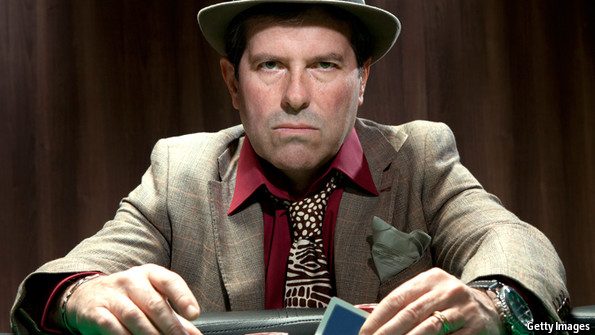Winning Face

A POKER face. It is the expressionless gaze that provides nothing away. To win at poker, the face should be practiced, and master it is what the finest players try their best to do. However a research just published in Psychological Science by Michael Slepian of Stanford University and his associates suggests that even individuals with the best poker faces offer the game away. They do so, nonetheless, not with their heads however with their hands.
Mr Slepian made his discovery when he showed 78 undergrad volunteers video clips of players placing bets at the 2025 World Series of Poker. (Bets in poker are put by pushing chips into the middle of the table.) The clips were 1.6 seconds long, usually, and featured various parts of the players' anatomies. Some revealed every little thing noticeable from the table up: chest, arms and head. Some showed just the face. And some revealed only the arms and hands. Each volunteer viewed just one of the three sorts of video, but was shown numerous examples.
After each viewing, volunteers were asked to rate the quality of the player's hand on a seven-point scale. Then, when they had finished enjoying all the clips, they were asked to rank their own experience with poker on a comparable scale.
Mr Slepian found that pupils were poor at evaluating the quality of a player's hand when revealed just that player's face. Without a doubt, he noticed an unfavorable connection of 0.07. This is not substantial (a perfect correlation is 1.0). However it implied there was a statistically substantial tendency that the much better a volunteer believed the hand to be, the worse it in fact was. When a player's whole posture was thought about, this misapprehension disappeared: if a volunteer could see everything about a player from the table up there was no correlation between his judgments of a hand's value and its real value. When a volunteer can see only arms and hands, nonetheless, Mr Slepian discovered a positive relationship, of 0.07, between his estimates and truth.
To confirm his discovery, Mr Slepian re-ran the experiment with a different set of clips. The results were the same. Pupils, even those who were poker amateurs, could judge the quality of a professional poker player's cards from the habits of his hands. The next question was, how?
Mr Slepian knew from previous researches by other individuals that anxiety has a tendency to disrupt smooth body motions, and he suspected this could be the description. To discover, he revealed 40 new volunteers the clips he had used in the previous experiment. Rather than inquiring to judge the quality of a player's cards, nevertheless, he asked to rate either that player's confidence or how smoothly the player pushed his chips into the middle of the table.
He found that when students rated players as being positive or having hands that relocated efficiently, the cards they held were likely to be good. There was a favorable correlation of 0.15 when the students thought about confidence and of 0.29 when they looked for smooth movement, so they were in fact more efficient in figuring out hand quality from these variables than when asked to estimate it straight. The moral of the tale for players, then, is don't look your challenger squarely in the eye if you wish to know how excellent his cards are. The secret of his hand is in his hands.
Tweet < Back to articles
